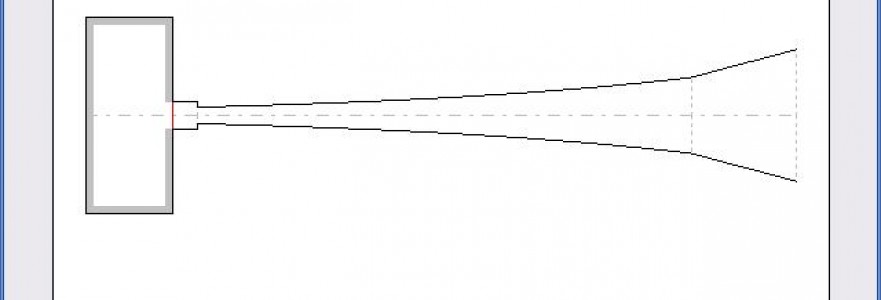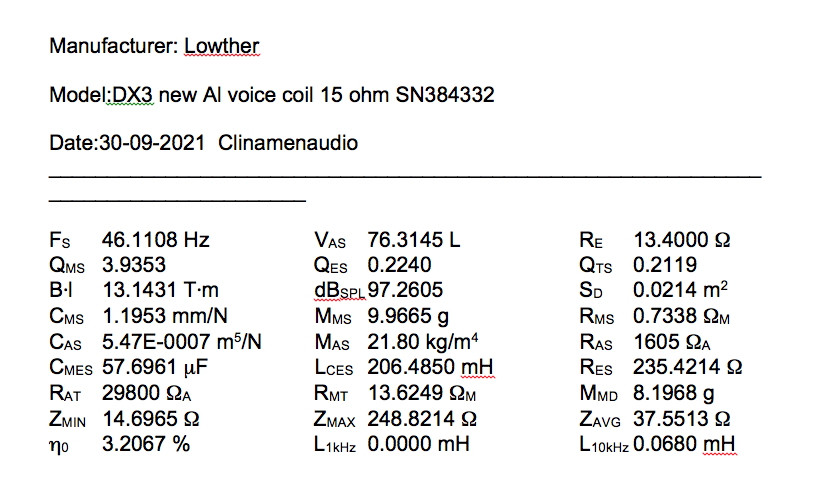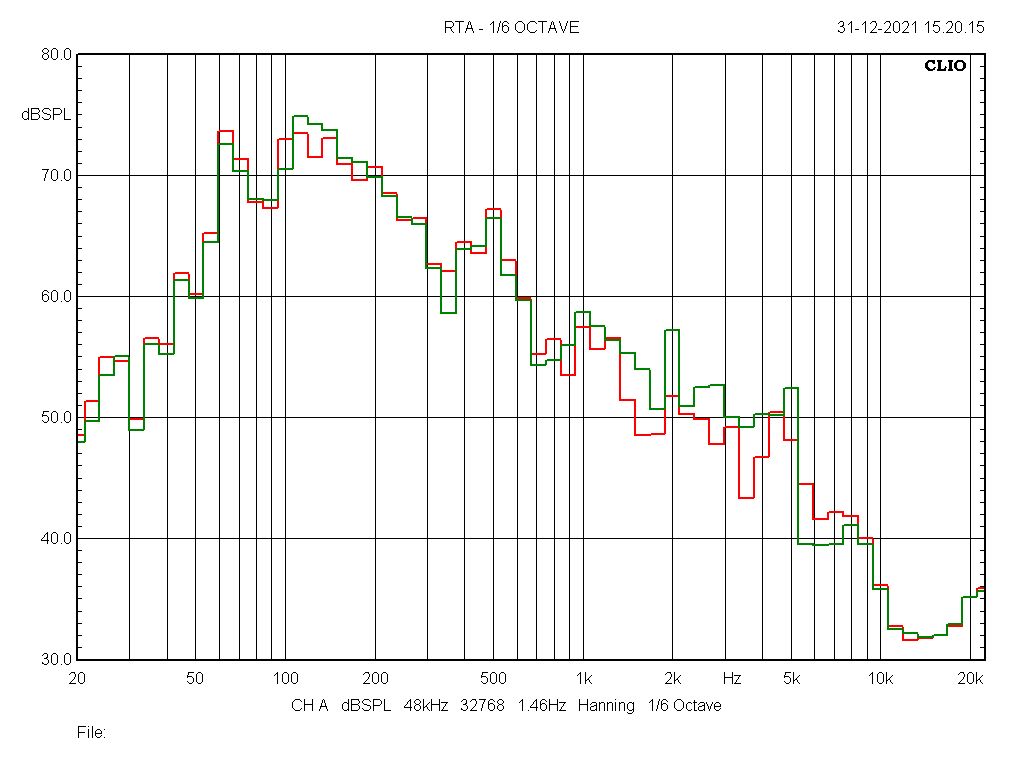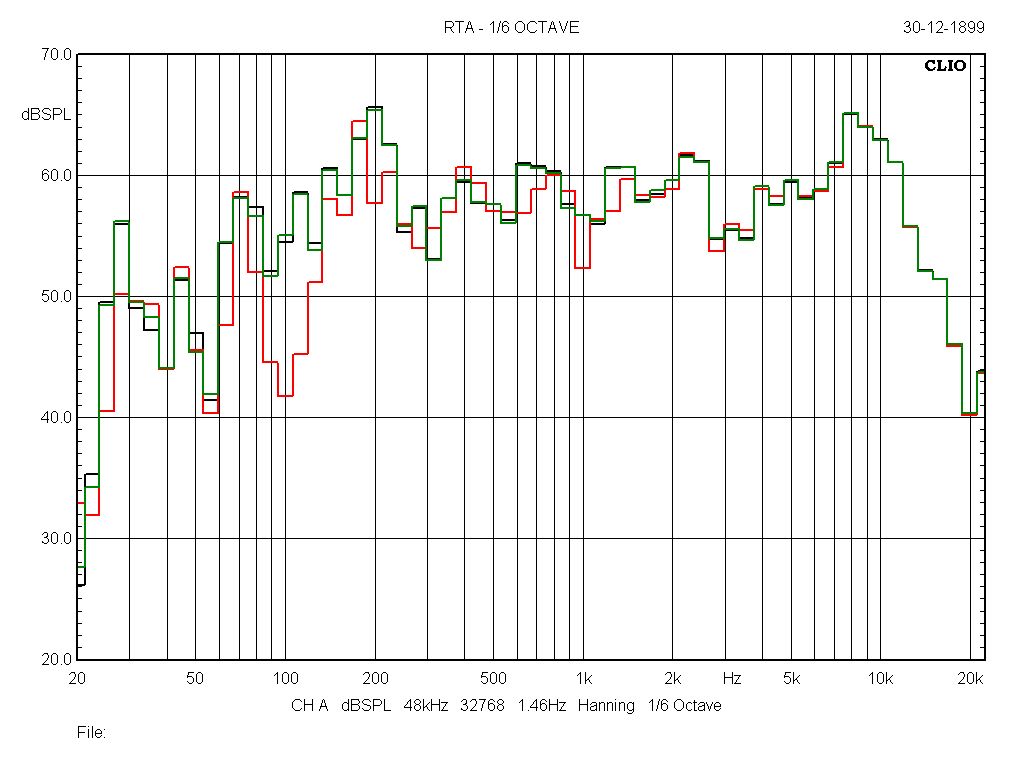Home |
Clinamen | Philosophy | Customer reviews | White paper | Partners | Pricing policy | Contact


Boosthorn for Hedlund
I have owned a couple of Hedlund horns for some time; they are relatively famous cabinets for the Lowther drivers’ horn loading. The build quality is exceptional, although not refined, I believe they are by Ikarus Audio. Unfortunately, though, they had been parked in a corner for years due to the missing low range. I had given up, blaming partly the loudspeaker cabinet, partly the Lowther loudspeaker, which in this particular case is a DX3 (neodymium series, mid range, halfway between DX2 and DX4).
I thought that the famous ‘screaming’ ascribed to the biconical Lowthers was an intrinsic feature of their design. I was very wrong indeed. The question is quite complex and I don’t mean to explore it fully in this informative article. I will only mention that the full-range Lowthers are exceptional loudspeakers, with unique electro-physical features, but as such they must be used to the best of their capabilities. There are special requirements to be satisfied, otherwise they will be blamed for faults they don’t have.
I would like to list some of the reasons why the Lowther loudspeakers are sometimes labelled as little balanced, discordant or generally ill-sounding
- In the Lowther models that go from medium to high motorizations, the magnetic circuit is strongly oversized; this is achieved through narrow magnetic gaps (between 1 and 1.25mm) and big magnets made of AINiCo or rare-earth elements (neodymium). This gives numerous advantages, such as a high damping factor and rapid response to the transients. The counterweight, though, is a response trend in an asymptotically increasing frequency. The latter is not a fault per se, but it implies an appropriate use of the loudspeaker in order to linearize it naturally. This means that if we use them dipole loaded, in reflex or even in horns loaded from the back but with the front face that irradiates free air, we will feel an unbalancing on the medium-high frequencies; the greater the unbalancing the more we use strongly motorized loudspeakers (DX4, PM2A, PM5A, PM3A, PM4A). Not by chance Lowther has recently introduced an equalizing circuit to ‘level’ the excess medium range, when the above mentioned loudspeaker is used on direct front radiation. Not by chance the most demanding projects of Lowther loudspeakers, such as the TP1, which mount the tremendous PM3, are also front loading.
-
Let’s keep in mind then that THE LOWTHERS ARE EXTREMELY LINEAR WHEN THEY WORK IN FRONT WAVE GUIDE, and thus we do justice to these fantastic drivers when used so. Loudspeakers like the PM6 or the DX2, on the other hand, have more straightforward merits and are decently linear even without being used in the front wave guide.
In the following table we show the Thiele and Small parameter of our DX3:
By reason of the electro-physical features of the Lowther loudspeakers range (great motorizations, high BxL factors, light mobile mass...) they are well suited to work with a horn acoustic load. Unfortunately the horns built in most projects have several issues:
- In order to keep a reasonable compactness of the loudspeaker cabinet the development of the horn undergoes too many and too severe folds, especially at the beginning of the duct and on its final part. This brings heavy alterations to the response in frequency and phase rotations.
- Extremely under-sized output mouths. This brings a poor match between the acoustic impedance of the diaphragm and of the air, with heavy alterations on the real and imaginary part of the acoustic impedance, which once again bring alterations in the response in frequency.
- Major issues are also present in the back loading chamber of the loudspeaker. Indeed, in the horn loudspeaker an uncoupling volume between loudspeaker and ‘throat’ of the horn is usually placed. This volume works as a mechanical filter, introducing a pole in the frequency response. This is quite interesting, because we don’t want the medium range coming out of the mouth as well; it would work as a comb filter with the front emission of the cone, since it comes out delayed. The greater the volume of the cavity, the lower the pole in the response in frequency of the horn. Unfortunately this cavity is neglected in the form and treatment of its walls. Since the cavity is between 3 and 6 liters in size (in the Lowther horn loudspeaker) it is the seat of big energy rebounds, which will reflect on the very light membrane of the Lowther, creating once again distortions and non-linearity.
- Finally, the position of the horn loudspeakers is extremely critical; we must respect the conditions of radiation (solid angle) which the loudspeakers have been designed for. Indeed, the mouth area of the horn is a function both of the minimum reproducible frequency and of the solid radiation angle. For each halving of the solid angle we have the halving of the necessary mouth surface with equal reproducible Fc frequency. In order to ‘keep under control’ the enormous necessary dimensions, when we look for a good response in low frequency, we usually design with a corner position in mind for the loudspeaker, that is at the joining of the two walls and the floor. Thus we minimize the solid angle (π/2) and therefore the mouth dimensions, for an Fc end. If a loudspeaker designed for an angle radiation is placed too far from the joining of the two walls (bottom and side) the result will be a degradation of the minimum reproducible frequency as well as some annoying ripple in passing band.
As you can see the topic is quite extensive and certainly not complete, but you can already understand why the Lowther drivers often have a reputation they don’t deserve.
But let’s finally talk about the project BOOSTHORN, that is precisely a BOOSTER horn applied to the well known Hedlund Horn. First of all I want to make it clear that I am not implying that the original Hedlund loudspeaker does not work well or that it was poorly designed by its creator (who actually had excellent ideas such as getting rid of sharp curves along the channel), but, like everything in the world, it is the result of compromises, first of all size.
I have tried to improve the situation as much as possible, having the desire and space to improve a loudspeaker with excellent potential. To this end I would like to thank my friend Angelo Fragalá, great expert in the Lowther world, with whom I have had a significant and fruitful exchange of ideas. Without Him I would not have understood the hidden potential of the Hedlunds. Thank you Angelo.
Pictures speak louder than words; the most visible intervention is the addition of a diverging conical channel, which has thoroughly been simulated with Hornresponse. This intervention lowered the system’s harmony Fc, reaching a horn length of over 3.3 meters.
Obviously the development of the channel is not ideal as if we’d started a project from scratch, but the results simulated with Hornresponse, measured and listened to, gave us huge satisfaction.
At present the Boosthorns are only supported by the Hedlunds but we are in the process of designing clamps that will be fixed both to the Hedlund and the Boost, and which will be later ‘tie-rodded’. There will also be a seal between them. The Boosthorns are made of 23mm birch plywood.
There have also been ‘non visible’ interventions, just as important, concerning the compression chamber. It has been suitably processed to help the degradation of the energy of medium-high frequency, in order for it not to spread in the horn and backwards towards the loudspeaker’s cone.
Another important alteration has been the use of a 3mm laser cut cork gasket, in order to mechanically uncouple the Lowther basket from the Hedlund’s cabinet.
In the image of the Clinamenaudio Atelier you can see how the loudspeakers have been placed as much as possible in the joining of the two angles. The more they are in the corner, the closer we are to the radiation of π/2 Steradian, project radiation. If you are worried that the position backed against the bottom wall limits the depth of the scene, you are misguided; focus and scene are absolutely astonishing.
If you are used to multi-way loudspeakers, be prepared for a pleasant and shocking surprise.
Below you can see the response simulated both with and without the Boosthorns. The improvements in the ripple and in the frequency response are extremely tangible. This is thanks to the superior performance of the acoustic impedance, which loads the loudspeaker’s membrane with less rippling and more consistently with frequency changes.
Below you can see the response at sixths of an octave, excited by pink noise, recorded at the mouth of the horn (the two curves refer to the different volumetry of the chamber, as well as damping). It is beautiful to see the Natural low-pass performance of the ‘Horn system’: the reduction of the response has three poles, one due to the cavity behind the loudspeaker, one due to the mobile mass of the latter, and finally one due to the inductance of the mobile coil, but in the Lowther the inductance is extremely low and this pole is very high. You can see how the mouth emits with great energy even at 60 Hz frequencies!
Finally, the response to pink noise at sixths of an octave, of the Hedlund with and without the Boosthorn. We’ll leave the comments to you, the readers.
The listening is thrilling; listening to a well-dimensioned horn bass is an experience that leaves a mark. The gumminess and artificiality of the resonant systems disappear; everything becomes clearly audible, not being masked any longer. Speed, harmonics and focus: they are record breaking.
The alteration of the Boosthorn is available in every detail, both only as building plans and as an assembling kit (including soundproof material for the compression chamber and cork gaskets for the Lowther).



